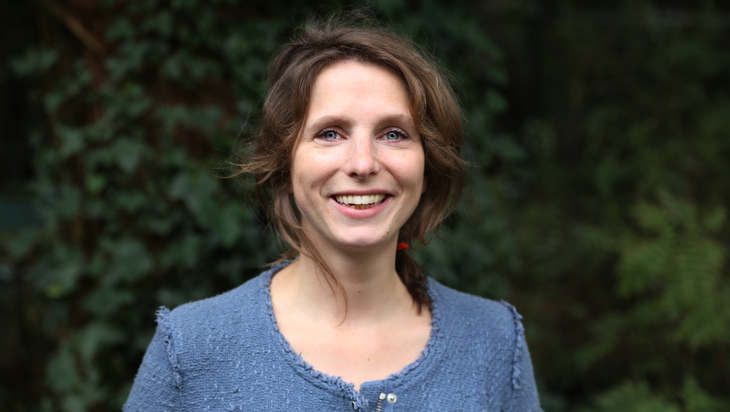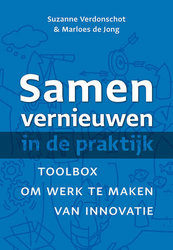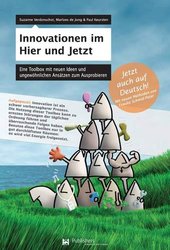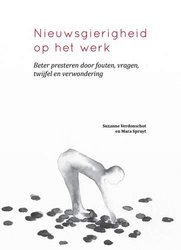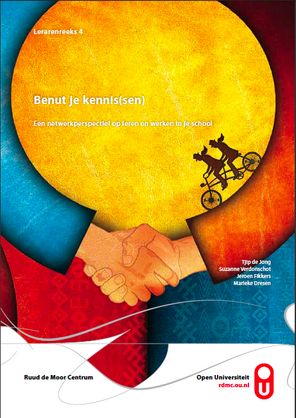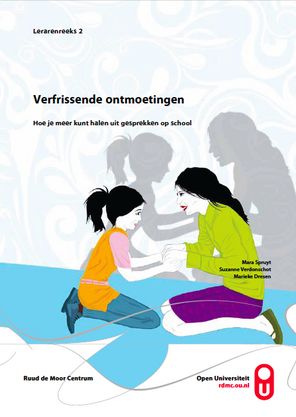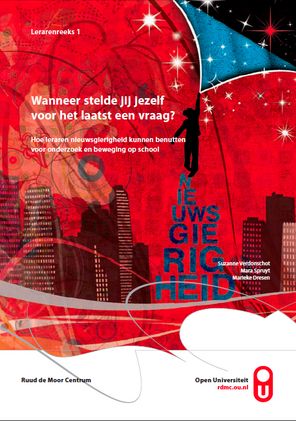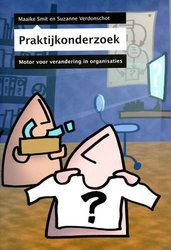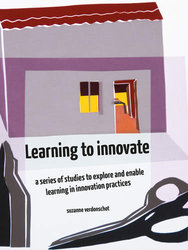Suzanne Verdonschot
Curiosity as a starting point
I see my role as facilitating learning and innovation in work contexts. I often choose research as an approach. Research is a great way of working to get things moving. Especially because you then use the power of curiosity; knowledge starts to flow when people have questions. At the moment I guide organisations and teams that are curious about how they can develop a small innovation or a successful experiment into a large-scale movement. In addition, I do a lot of research to determine the impact of learning and change interventions on performance and strategic goals. I regularly publish the insights from these kinds of projects in articles, research papers and books.
From a single breakthrough to widespread innovation
A major innovation does not start with a major plan of action. You rather book results with small experiments by people who want to participate. In my PhD research, I discovered that several small breakthroughs ultimately lead to innovation. However, a question about which not much is yet known is how you can develop those little 'beginnings' into the big movement you are after. If one team succeeds in greatly increasing customer satisfaction by organising its own work process more intelligently, how can you get more teams involved? If a group of colleagues finds ways to do their own work with more energy, how can they inspire others? In other words: how can we 'anchor and sustain' these small changes, how do you get them 'in the DNA of the organisation', how do you 'scale up' or 'secure' them - to name but a few of the desires that I often hear around me. I support teams and organisations with these questions. And I do research into them.
The impact of learning
Whether you organise a learning trajectory for a team, or set up a large-scale change in the organisation, you always hope that such interventions will bring about something. But do they really? Do those involved learn something new and does it help them to act more effectively in their working practices? Do the interventions lead to an improvement in the service or products for the customer? These are relevant questions about the impact of learning. Especially if you want to work on improvement and innovation in practice, it is important that new learning also leads to doing something new. This can be found out by investigating the effects of learning trajectories, training courses and change interventions on the day-to-day practice and the strategic goals. Over the past five years, the research group I lead has carried out more than 30 impact studies. The tools we have developed can be applied in many contexts. We design the impact research in such a way that it not only measures the impact, but also helps to increase it. Whether it is a large-scale study into the strategic impact or an intermediate evaluation that leads to concrete follow-up actions.
publications
-
11-28-2024 /
Realist evaluation of an art-based intervention to enhance creative learning in an organizational setting
-
11-24-2022 /
Scaling up innovation without losing ‘the sparkle’: a case study of three innovation practices
-
02-07-2019 /
Ruimte voor leren in het werk
-
11-06-2018 /
Exploring the learning potential of evaluation research by a review of 17 impact studies
-
11-06-2018 /
Learning interventions are only then successful when people actually start doing something differently in their day-to-day work
-
10-08-2018 /
Een leertraject evalueren tijdens een levendige sessie
-
09-11-2018 /
Vernieuwing als beweging
-
03-29-2018 /
Hoe houd je de energie vast na een bijeenkomst vol plannen? Tips uit een onderzoek naar de impact van een veranderinterventie
-
11-28-2017 /
The impact of a leadership program
-
10-05-2017 /
De presentatie van je onderzoek inrichten als ontwerpsessie
-
09-28-2017 /
Data-analyse samen met een grote groep betrokkenen doen
-
09-22-2017 /
Een activerende kick-off voor je onderzoek organiseren
-
08-21-2017 /
De Weegschaal - Onderzoek naar de impact van regelmatige feedback van collega’s op de werkvloer
-
12-01-2016 /
Hoe gesprekken bijdragen aan organisatieverandering
-
11-29-2016 /
De impact van een kort leertraject gericht op talentontwikkeling
-
11-08-2016 /
Nieuwsgierig zijn
-
11-08-2016 /
Bepalen van impact op werkresultaten
-
09-14-2016 /
Leren van je fouten: makkelijker gezegd dan gedaan
-
09-13-2016 /
Learning by experimenting. Four building blocks that help to start your own experiment
-
08-31-2016 /
Van betrokkenheid naar invloed
-
03-30-2016 /
Relationeel ontwerpen van leertrajecten in de context van het werk
-
01-25-2016 /
Is nieuwsgierigheid iets dat je kunt leren? Een onderzoek naar de impact van het leertraject 'Jeugdhulp op Toernee'
-
01-18-2016 /
Een zorgorganisatie begint te werken met zelfsturende teams. Drie hobbels die je onderweg kunt tegenkomen
-
11-10-2015 /
Innovieren im Studium lernen. Elf Fähigkeiten und Tipps für Lehrende
-
06-09-2015 /
Tien tips om de kloof tussen training en werkplek te overbruggen
-
06-06-2015 /
Organizational change: one conversation at a time
-
06-01-2015 /
Wetenschappelijk en technisch geschoolde leidinggevenden hebben meer contact en zorgen voor dialoog na leiderschapstraject
-
04-13-2015 /
Leren in het werk ondersteunt managers van een zorgorganisatie in een turbulente tijd
-
01-14-2015 /
Hoe coaching het verschil kan maken (2)
-
12-23-2014 /
Leidinggevenden benutten individuele coaching voor impact op organisatiedoelstellingen
-
11-06-2014 /
Nieuwsgierigheid is de motor voor leren
-
07-02-2014 /
Het geheim van de smid. Nieuwsgierigheid
-
09-23-2013 /
Listen to the radio!
-
07-26-2013 /
Fluitend naar het werk! Impact creëren door inzet van actieonderzoek
-
08-13-2012 /
Common Knowledge
-
08-13-2012 /
Corporate curriculum
-
06-16-2012 /
Medewerkers op de werkvloer geven vorm aan innovatie in het werk: onderzoek bij vijf organisaties
-
04-09-2012 /
Shop assistants as instigators of innovation: analysis of 26 innovation initiatives in 17 Dutch supermarkets
-
04-01-2012 /
Experimenting, reinventing the wheel and talking with friends
-
03-16-2012 /
Onderzoekend werken in de praktijk Directe antwoorden en pasklare oplossingen voorbij
-
11-06-2011 /
Characteristics of learning environments which support knowledge productivity and which facilitate innovation
-
11-06-2011 /
Ontwerpgericht onderzoek als innovatiestrategie
-
10-27-2011 /
Learning with the intention of innovating: 11 design principles for knowledge productivity
-
09-04-2011 /
Van trends naar toekomst
-
04-27-2011 /
Het museum als een belevenis
-
10-11-2010 /
Ontwerpen van leeromgevingen voor leren en innoveren
-
08-09-2010 /
Werken aan innovatie: over de waarde van een voorschrijvend model
-
07-07-2010 /
Ontwerpen van een werkomgeving voor leren en innoveren
-
06-07-2010 /
Leren om te innoveren (leren op de werkplek)
-
06-07-2010 /
Onderzoek moet tot actie leiden
-
11-23-2009 /
Klantgerichter werken in de supermarkt
-
10-21-2009 /
Ans Grotendorst in gesprek met Suzanne Verdonschot
-
11-29-2008 /
Innoveren vraagt om communiceren, bevindingen uit een onderzoek naar de bijdrage van het sociaal communicatief proces aan kennisproductiviteit.
-
11-29-2008 /
From fairytales to spherecards: Towards a new research methodology for improving knowledge productivity
-
05-23-2008 /
Knowledge work in successful supermarkets: shop assistants as innovators
-
05-05-2008 /
From Fairytales to Spherecards: Towards a New Research Methodology for Improving Knowledge Productivity
-
04-09-2008 /
The prescriptive quality of 11 design principles for knowledge productivity
-
04-09-2007 /
Validation of a set of design principles to promote knowledge productivity and innovation
-
04-09-2007 /
En, lekker geleerd vandaag? Een pleidooi voor praten over leren op het werk
-
04-09-2007 /
Preservice teachers perceptions of an ICT-rich learning environment: Development of an instrument
-
04-09-2007 /
Reflectie op het werk om leren te bevorderen
-
11-29-2006 /
Leren en innoveren, ontwerpprincipes voor kennisproductiviteit
-
11-29-2006 /
Design principles for knowledge productivity
-
11-29-2006 /
HRD’ers en hun favoriete publicatie, verslag en analyse van artikelen die dertien prominente HRD’ers inspireerden.
-
04-09-2006 /
Methods to enhance reflective behaviour in innovation processes
-
04-09-2006 /
Investeren in mensen, bestrijding van ziekteverzuim via verbetering van het werkklimaat
-
04-09-2006 /
De Werveling
-
03-03-2006 /
Disturbing the system
-
01-22-2006 /
Relating learning, knowledge creation and innovation: case studies into knowledge productivity
-
06-29-2005 /
Verse bloemen in een hotelkamer
-
04-09-2004 /
Borderless learning experiences : The development of design guidelines for collaborative distance learning environments
-
02-25-2004 /
Welke factoren zijn bepalend voor kennisproductiviteit?
Podcasts
Contact
Curious to learn more about Kessels & Smit?
Get in touch with Suzanne Verdonschot
